K. B. Shashika Manosha
GDOP Based BS Selection for Positioning in mmWave 5G NR Networks
Oct 23, 2023



Abstract:The fifth-generation (5G) of mobile communication supported by millimetre-wave (mmWave) technology and higher base station (BS) densification facilitate to enhance user equipment (UE) positioning. Therefore, 5G cellular system is designed with many positioning measurements and special positioning reference signals with a multitude of configurations for a variety of use cases, expecting stringent positioning accuracies. One of the major factors that the accuracy of a particular position estimate depends on is the geometry of the nodes in the system, which could be measured with the geometric dilution of precision (GDOP). Hence in this paper, we investigate the time difference of arrival (TDOA) measurements based UE positioning accuracy improvement, exploiting the geometric distribution of BSs in mixed LOS and NLOS environment. We propose a BS selection algorithm for UE positioning based on the GDOP of the BSs participating in the positioning process. Simulations are conducted for indoor and outdoor scenarios that use antenna arrays with beam-based mmWave NR communication. Results demonstrate that the proposed BS selection can achieve higher positioning accuracy with fewer radio resources compared to the other BS selection methods.
Supervised Learning based Sparse Channel Estimation for RIS aided Communications
Feb 24, 2022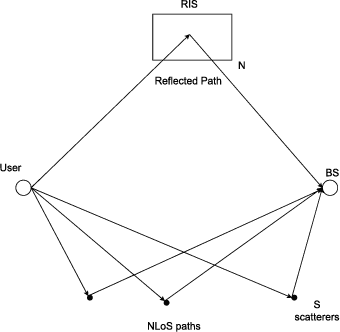
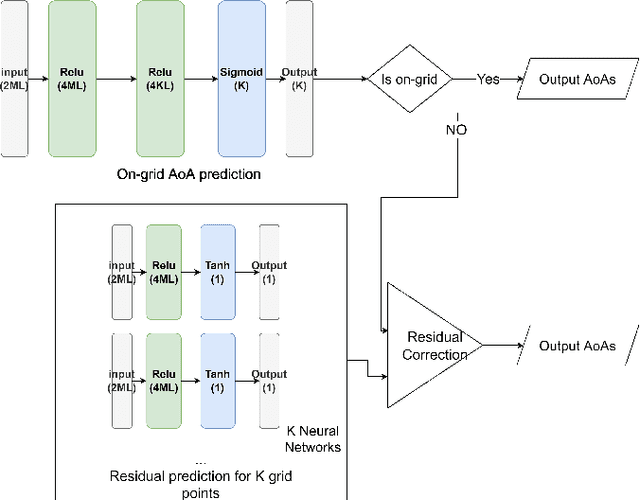
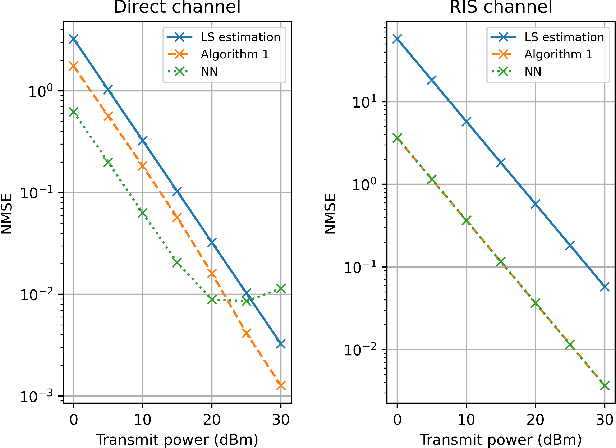
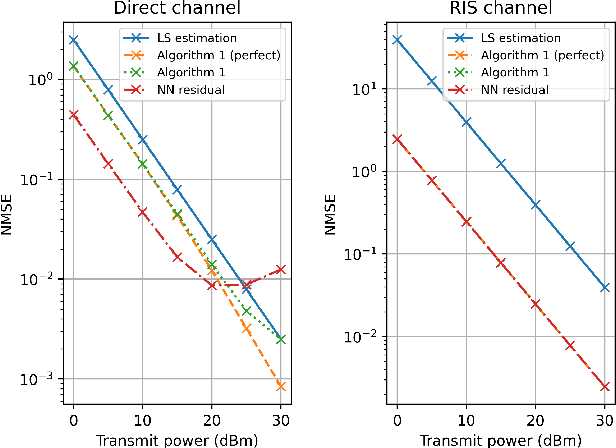
Abstract:An reconfigurable intelligent surface (RIS) can be used to establish line-of-sight (LoS) communication when the direct path is compromised, which is a common occurrence in a millimeter wave (mmWave) network. In this paper, we focus on the uplink channel estimation of a such network. We formulate this as a sparse signal recovery problem, by discretizing the angle of arrivals (AoAs) at the base station (BS). On-grid and off-grid AoAs are considered separately. In the on-grid case, we propose an algorithm to estimate the direct and RIS channels. Neural networks trained based on supervised learning is used to estimate the residual angles in the off-grid case, and the AoAs in both cases. Numerical results show the performance gains of the proposed algorithms in both cases.
Untrained DNN for Channel Estimation of RIS-Assisted Multi-User OFDM System with Hardware Impairments
Jul 13, 2021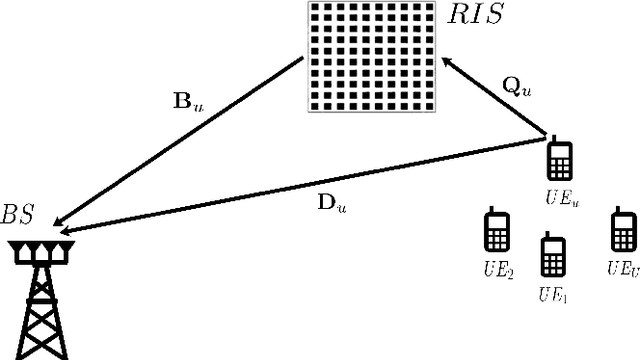
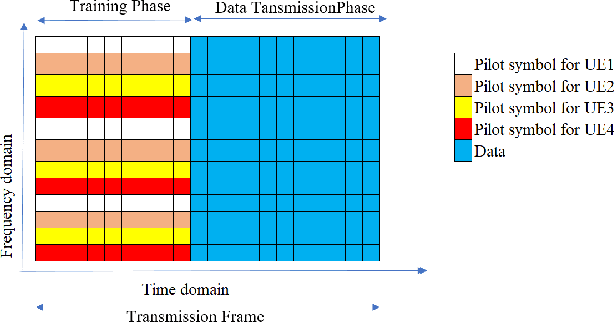

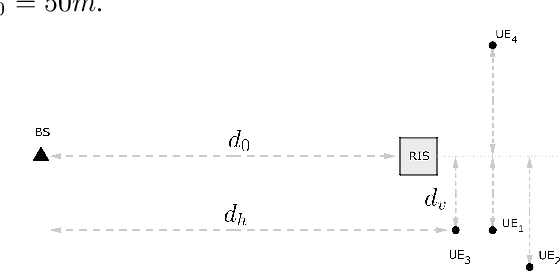
Abstract:Reconfigurable intelligent surface (RIS) is an emerging technology for improving performance in fifth-generation (5G) and beyond networks. Practically channel estimation of RIS-assisted systems is challenging due to the passive nature of the RIS. The purpose of this paper is to introduce a deep learning-based, low complexity channel estimator for the RIS-assisted multi-user single-input-multiple-output (SIMO) orthogonal frequency division multiplexing (OFDM) system with hardware impairments. We propose an untrained deep neural network (DNN) based on the deep image prior (DIP) network to denoise the effective channel of the system obtained from the conventional pilot-based least-square (LS) estimation and acquire a more accurate estimation. We have shown that our proposed method has high performance in terms of accuracy and low complexity compared to conventional methods. Further, we have shown that the proposed estimator is robust to interference caused by the hardware impairments at the transceiver and RIS.
Deep Learning-based Power Control for Cell-Free Massive MIMO Networks
Feb 20, 2021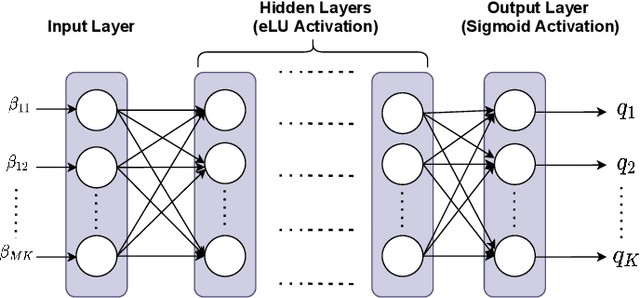

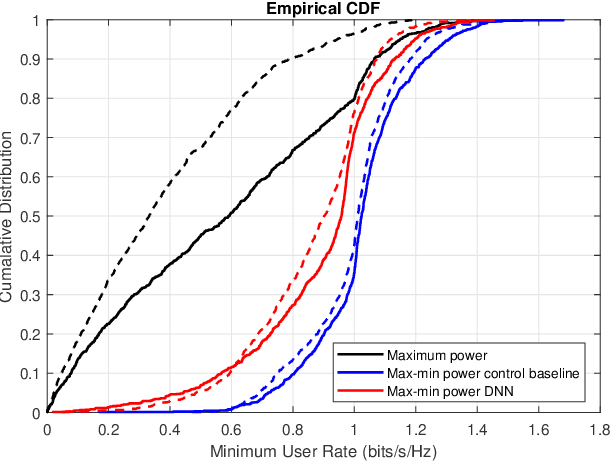

Abstract:A deep learning (DL)-based power control algorithm that solves the max-min user fairness problem in a cell-free massive multiple-input multiple-output (MIMO) system is proposed. Max-min rate optimization problem in a cell-free massive MIMO uplink setup is formulated, where user power allocations are optimized in order to maximize the minimum user rate. Instead of modeling the problem using mathematical optimization theory, and solving it with iterative algorithms, our proposed solution approach is using DL. Specifically, we model a deep neural network (DNN) and train it in an unsupervised manner to learn the optimum user power allocations which maximize the minimum user rate. This novel unsupervised learning-based approach does not require optimal power allocations to be known during model training as in previously used supervised learning techniques, hence it has a simpler and flexible model training stage. Numerical results show that the proposed DNN achieves a performance-complexity trade-off with around 400 times faster implementation and comparable performance to the optimization-based algorithm. An online learning stage is also introduced, which results in near-optimal performance with 4-6 times faster processing.
 Add to Chrome
Add to Chrome Add to Firefox
Add to Firefox Add to Edge
Add to Edge